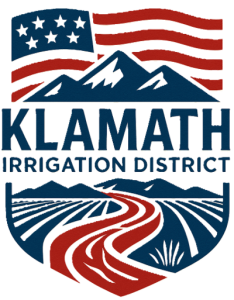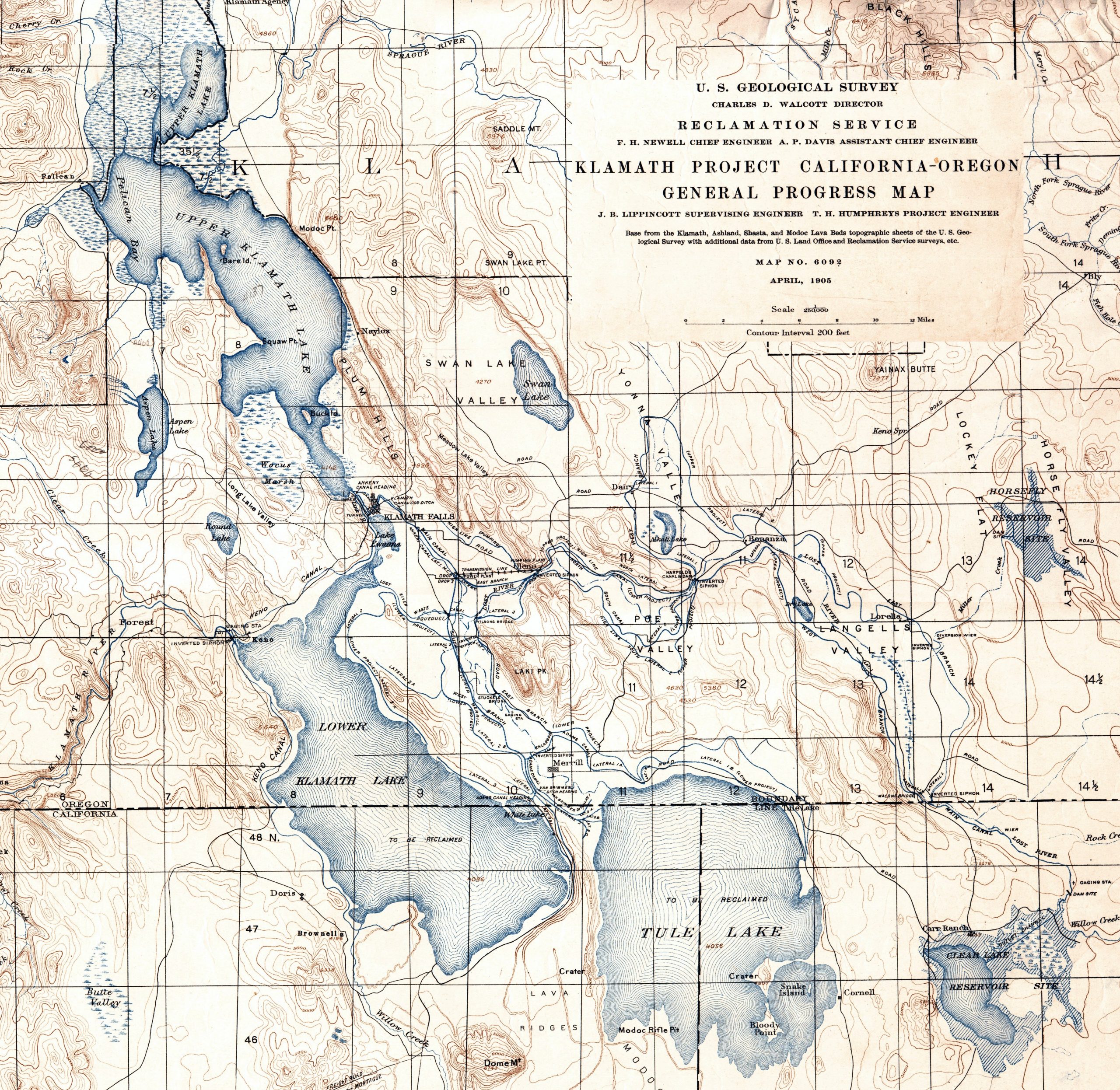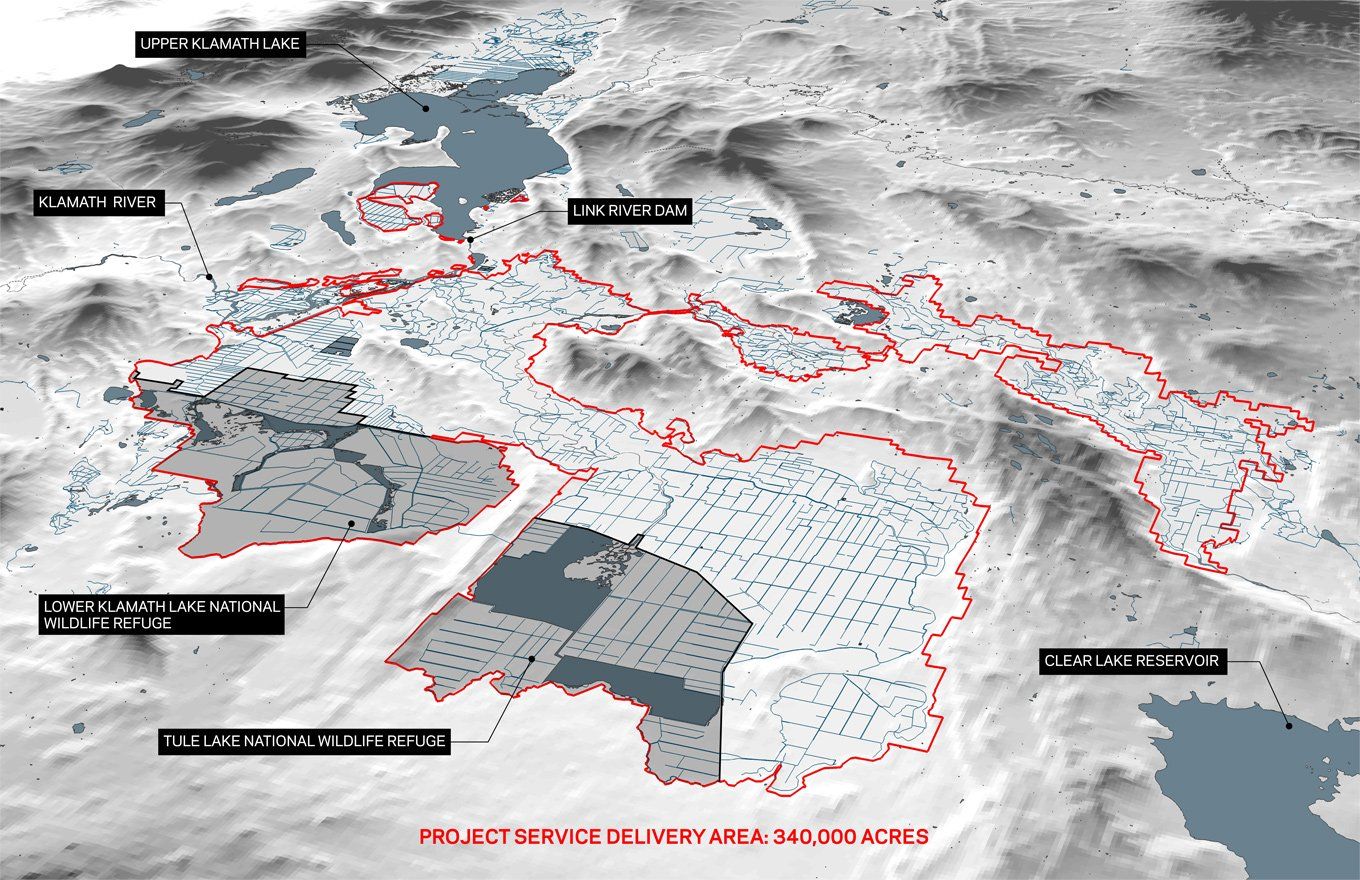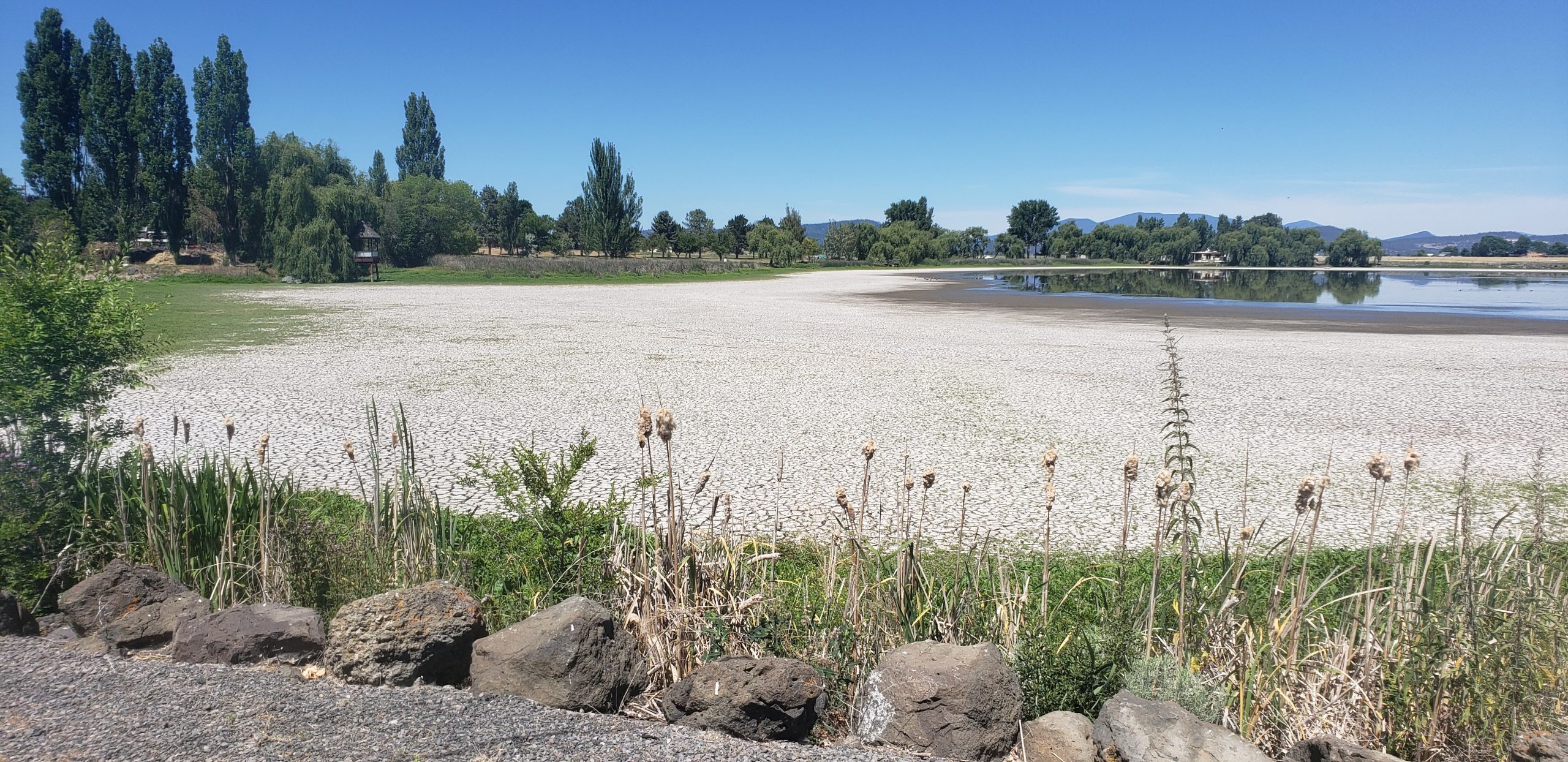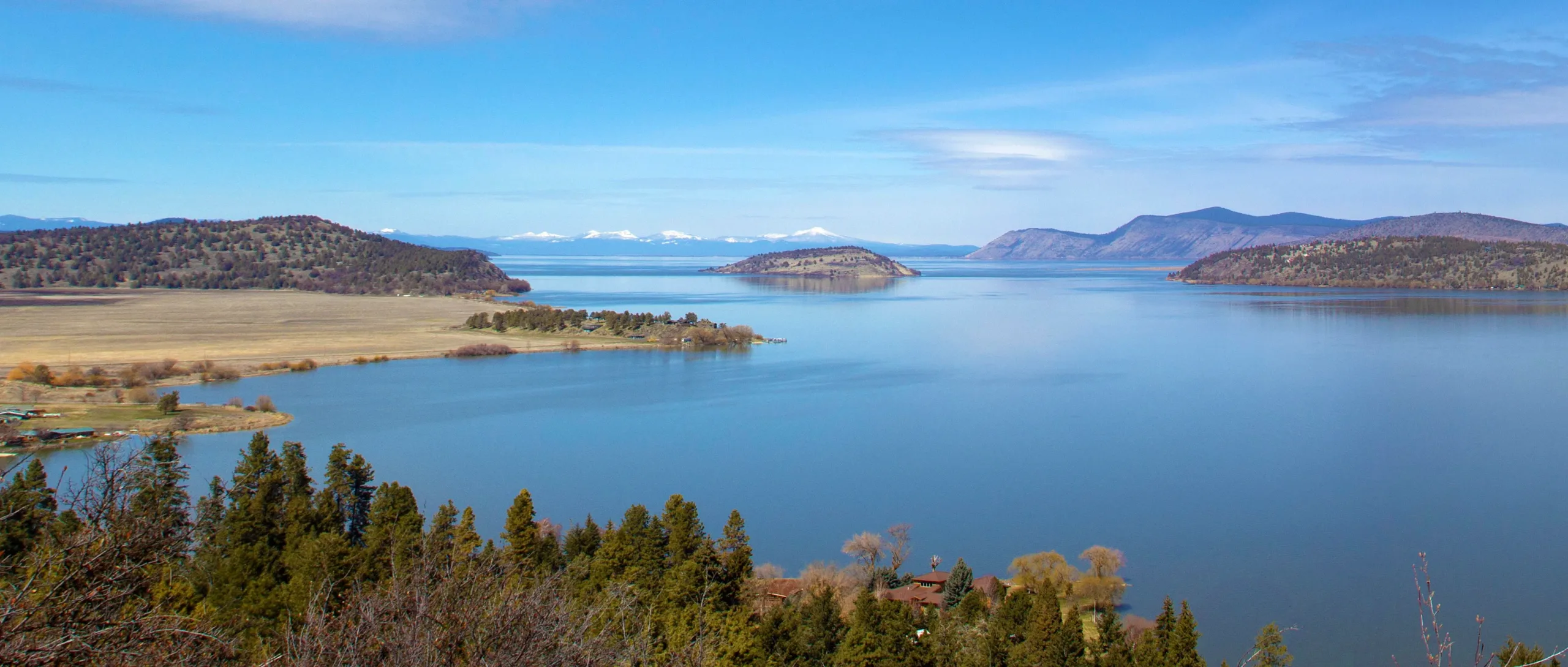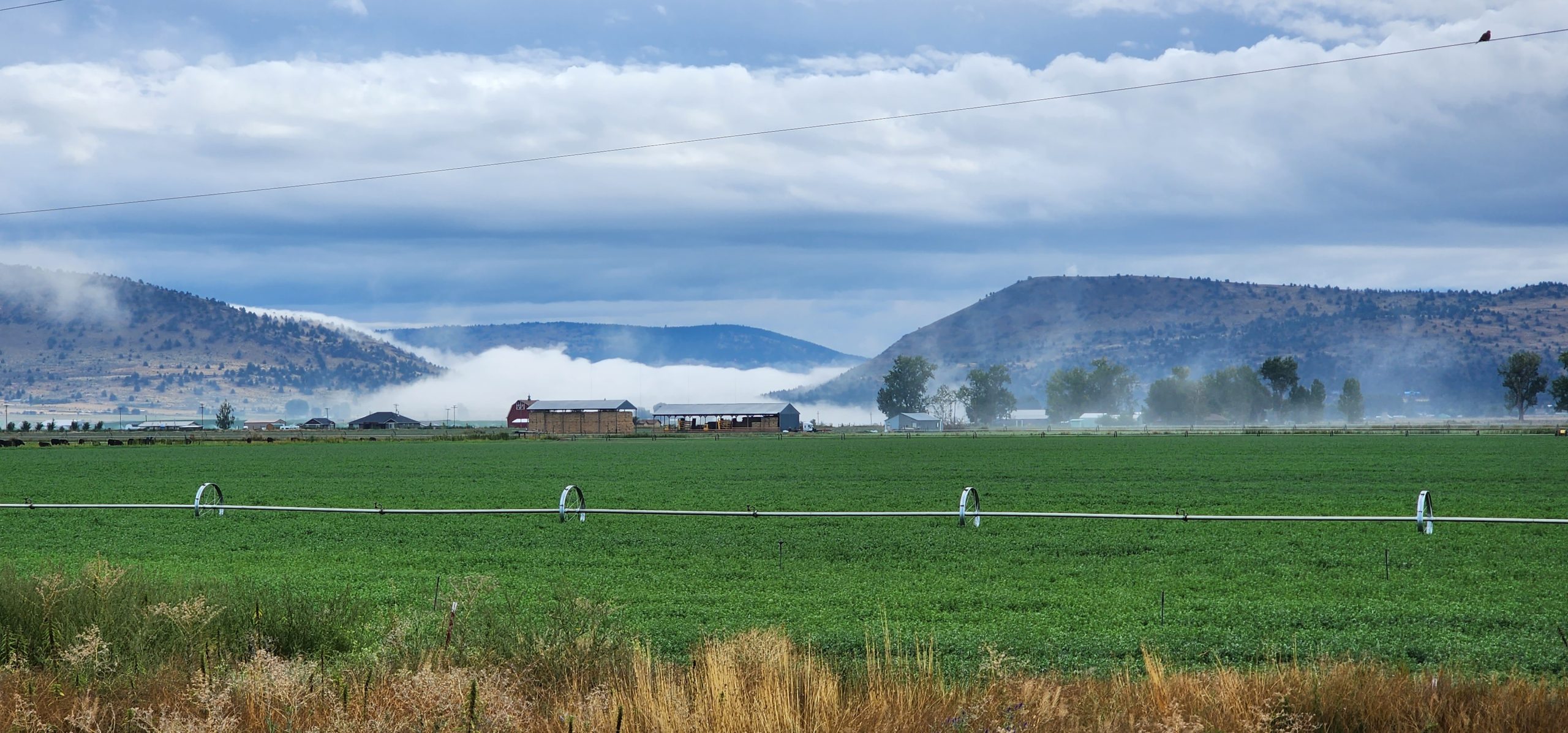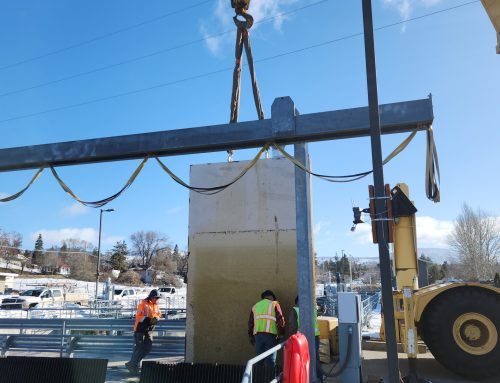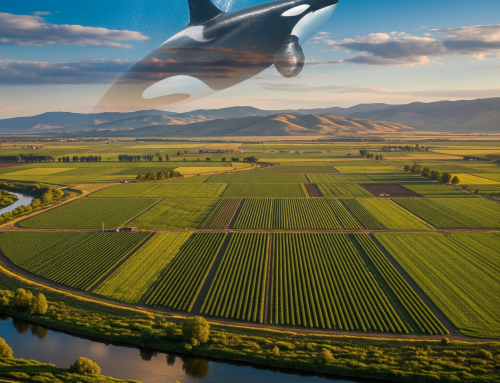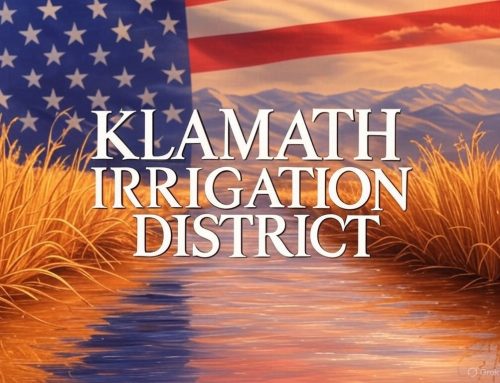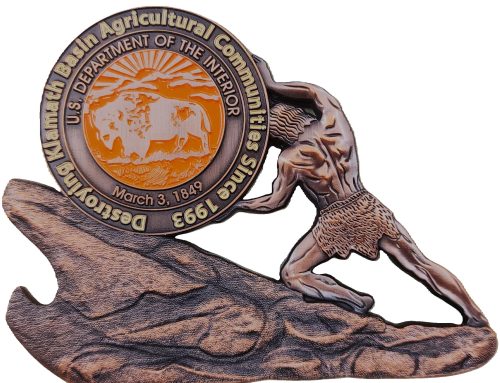For decades, the Klamath Reclamation Project (KRP) has been at the center of complex water debates. Often misunderstood, the KRP is far more than just an irrigation project; it’s an endeavor that, when operated as designed, fundamentally transforms natural hydrological extremes into conditions that benefit both agriculture and native species. Let’s explore how the KRP provides vital water stability and ecological advantages, supported by a robust body of scientific evidence, and why some prevailing narratives miss the mark.
Taming Nature’s Wild Swings: Stable Flows and Elevated Waters
Before the KRP, the Klamath Basin was a landscape of dramatic hydrological fluctuations. Imagine vast wetlands that had large areas inundated with water in the spring, with thousands of acres of lush dry grasses supporting large animal populations by the fall, and a Link River (the outflow from Upper Klamath Lake) that would routinely dry up for extended periods in summer, cutting off flow to the Klamath River entirely. These dry periods, with evaporation from Lower Klamath Lake, meant reduced availability for water from Upper Klamath Lake to the Klamath River below Keno in recurring droughts, the summer, and some fall months. Simultaneously, massive natural evaporation from over 182,000 acres of wetlands (much of it is now reclaimed farmland with similar evaporation effects) recycles hundreds of thousands of acre-feet of water annually, dropping that water in other places of the watershed during the heat of the summer, keeping the watershed sponge moist above the Klamath Reclamation Project.
The KRP reshaped these natural occurrences (dry rivers and low lake elevations are perceived to be negative in today’s context):
- Sustained Flows Below Keno: Since the Link River Dam’s completion in 1922, water has continuously flowed through the Link River preventing the natural drying that occurred in dry periods, thus augmenting the Klamath River below Keno even in the driest years when nature would have provided very little water to the Klamath River at Keno. This controlled release ensures consistent flows where seasonal drying once occurred.
- Water Gain, Not Loss: By managing wetlands and flows, the KRP actually stores vast amounts of water that would otherwise evaporated, or consumed to replace evaporative losses. In addition, the Lost River Diversion Channel (LRDC), an artificial feature of the KRP, adds water to the Klamath River above natural conditions when the water is not needed for agriculture or bypassed for flood control. This Lost River water historically flowed to the Tule Lake sink, effectively lost to the larger Klamath system. Overall, the KRP, when operated as designed, creates a net gain of water to the Klamath River below Keno in average water years, providing flows above natural conditions in the summer. In fact, total water consumption in the upper basin, including irrigation, is less than the historical evaporation losses that occurred naturally pre-project across the two former lakes.
- Higher Lake Elevations: The KRP, when operated as designed, allows for extended periods of higher water elevations in Upper Klamath Lake. This controlled storage ensures water availability during critical periods that would be severely limited under natural drought conditions.
Battling Drought, Embracing Floods: KRP’s Protective Role
The KRP is Congressionally only authorized for agricultural purposes. However, in performing its agricultural role, the operations of the works provide crucial stability and protection for the ecosystem, especially during extreme weather events:
- Drought Stability: By storing water (that would have naturally evaporated) in Upper Klamath Lake and utilizing return flows, the KRP ensures stable water availability during drought conditions. This proactive management buffers the naturally severe low-flow periods that would otherwise stress the river system and fish as modern biologists claim would occur with reduced summer flows.
- Flood Protection: During periods of heavy precipitation, the KRP’s infrastructure, such as the Lost River Diversion Channel, actively manages and redirects excess water. This prevents widespread flooding that historically inundated vast areas and would cause significant disruption and property damage. By channeling floodwaters, KRP helps mitigate the destructive impacts on habitats downstream.
Clearing the Waters: Science vs. Misinformation in Salmon Management
Despite the KRP’s hydrological benefits, opponents of irrigated agriculture claim operations have frequently been implicated in the decline of threatened species, often based on flawed science. It’s critical to understand the distinction between rigorous scientific inquiry and politically driven narratives.
Debunking Flawed Flow Studies: The “Hardy” Problem
The bedrock of many federal water management decisions, including past NOAA National Marine Fisheries Service (NMFS) Biological Opinions, has been the “Hardy flow studies” (1997-2006). However, an overwhelming consensus from independent scientific bodies, including the National Academy of Sciences (NAS), has decisively refuted these studies as inaccurate and biased.
- No Scientific Support for High Flows: The NAS (2002, 2004, 2008) repeatedly found “no clear scientific evidence or technical support for increased minimum flows in the Klamath River mainstem” for coho salmon. The NAS questioned whether the studies “can guide decision making effectively”.
- Outcome-Oriented and Biased: Reviews indicate that the Hardy studies were “outcome-oriented” and may have been influenced by contracts intended to support specific water rights claims, rather than unbiased science.
- Unachievable Flows: Hydrological analyses demonstrated that the flow regimes prescribed by Hardy’s models were “unachievable” under natural conditions and even in many years with KRP operations, as they overestimated available water. They biased historical flows by using an “abnormally wet period” as a baseline.
- Ignored Key Factors: Hardy’s models often neglected crucial factors like lake elevations and focused on mainstem river conditions, ignoring the critical role of tributaries for coho salmon.
Coho Salmon: Their True Habitat and KRP’s Negligible Impact
Threatened SONCC coho salmon primarily inhabit tributaries and off-channel areas, not the mainstem Klamath River, particularly during critical summer months.
- Tributary Dependence: Coho depend heavily on small, cool-water tributaries for spawning and rearing, preferring off-channel ponds, alcoves, and beaver-dammed sloughs. The mainstem Klamath River, especially in August, even with the enhanced above natural flows, often experiences temperatures exceeding 22°C, which is above the optimal coho thermal range, making the mainstem Klamath River unsuitable for summer rearing.
- KRP’s Disconnect from Coho Habitat: The KRP operations do not affect the conditions in these critical tributary habitats.
- Mainstem Migration, Not Rearing: While coho may use the mainstem for migration, their presence for extended rearing during summer is minimal to negligible.
- High Flows Harm Coho: Counter-intuitively, unnaturally high flows in the mainstem, sometimes prescribed by flawed models, can harm weak-swimming coho fry and juveniles by dislodging them from their preferred low-velocity habitats, increasing their energy expenditure and exposure to predators.
Southern Resident Killer Whales: A Minimal Connection
The connection between KRP operations and the endangered SRKWs is biologically negligible:
- Minor Prey Contribution: Only 2.2–2.3% of the entire SRKW diet comes from the Klamath Basin. The majority of this comes from Trinity River Chinook, whose runs are unaffected by KRP operations.
- Limited SRKW Presence: The J Pod, a third of the SRKW population, does not forage in the Klamath region at all. Only K and L Pods (approximately 33 whales) may seasonally access Klamath Basin Chinook, consuming a small fraction of their overall diet from this source.
- Hatchery Production: Klamath River hatcheries produce millions of Chinook salmon annually, primarily as mitigation for hydroelectric dam-related habitat loss.
Conclusion: The Klamath Reclamation Project as a Beneficial Water Manager
The Klamath Reclamation Project, when operated as designed and without undue constraints, is a vital system that transforms unpredictable natural conditions into a more stable and productive environment. It provides higher water elevations in Upper Klamath Lake, increases flows in the Klamath River below Keno above natural levels in the summer, offers crucial stability during drought, and provides essential flood protection.
Claims that KRP operations jeopardize species like SRKWs or threaten coho salmon often stem from a fundamental misunderstanding of basin hydrology, species-specific habitat needs, and reliance on flawed scientific models that independent experts have widely discredited. The science clearly demonstrates that KRP’s operational design benefits the overall basin’s water resources and can support species in a manner consistent with their ecological needs.
Water management decisions in the Klamath Basin must be rooted in accurate, unbiased science that considers the full historical and operational context of the KRP, allowing it to function optimally for the benefit of both its human communities and the diverse ecosystems it supports.
References:
- Soto, T., Corum, A., Voight, H., Hillemeier, S., & Lestelle, L. (2008). The Role of the Klamath River Mainstem Corridor in The Life History and Performance of Juvenile Coho Salmon (Oncorhuynchus kisutch) Phase 1 Report. Department of Natural Resources Karuk Tribe, Yurok Fisheries Program, Biostream Environmental.
- Ramos, M. M., & Ward, D. M. (2022). Modelling the reestablishment of coho salmon (Oncorhynchus kisutch) in Klamath River tributaries after dam removal. Ecology of Freshwater Fish.
- National Research Council. (2008). Hydrology, Ecology, and Fishes of the Klamath River Basin. The National Academies Press.
- Rykbost, K. A. (2001).
Review of Biological Opinions Affecting Klamath Project Operations.
- National Academy of Sciences. (2004). Endangered and Threatened Fishes in the Klamath River Basin: Causes of Decline and Strategies for Recovery. The National Academies Press.
- National Academy of Sciences. (2002). Scientific Evaluation of Biological Opinions of Endangered and Threatened Fishes in the Klamath River Basin; Interim Report
- Rykbost, K. A. (2003).
Hardy Expose Presentation to Klamath County Commissioners.
- Lestelle, L. (2007). Coho Salmon (Oncorhynchus kisutch) Life History Patterns in the Pacific Northwest and California. Biostream Environmental.
- U.S. Bureau of Reclamation. (2004).
Undepleted Natural Flow of the Upper Klamath River.
- Souza, G. R. (2024).
An Independent Scientific Literature Review and Biological Assessment of the Klamath Reclamation Project in Southern Oregon and Northern California.
- Soto, T. (2017).
Declaration to Public Trust.
- U.S. Fish and Wildlife Service. (2024).
FINAL Klamath Project Biological Opinion.
(Note: This document was acknowledged but its specific conclusions conflicting with the narrative were excluded as per user instruction.)
- Rykbost, K. A. (2001).
Upper Klamath River Natural Flow Study Review.
- Undepleted_Natural_Flow_Klam_Draft_2004_07_26.pdf. (2004).
- Federal Energy Regulatory Commission (FERC) License for the Klamath Hydroelectric Project.
- Klamath Hydroelectric Settlement Agreement (KHSA) Implementation Plan.
